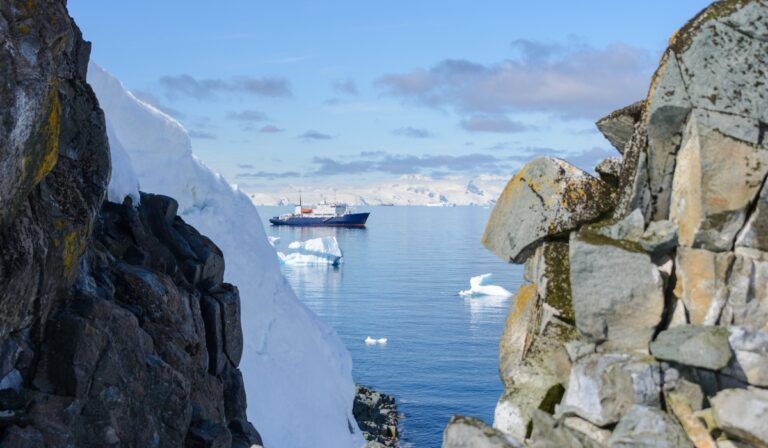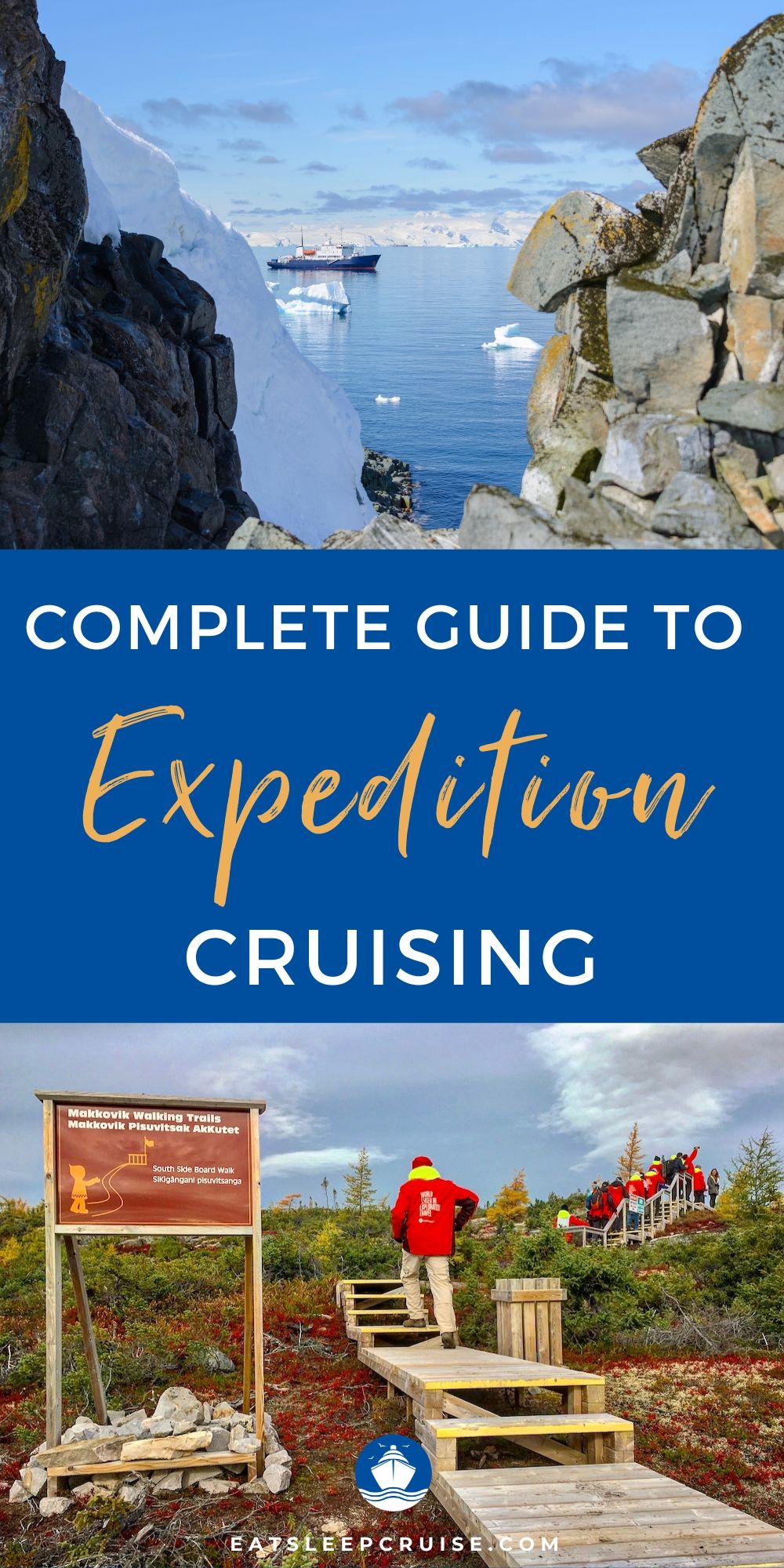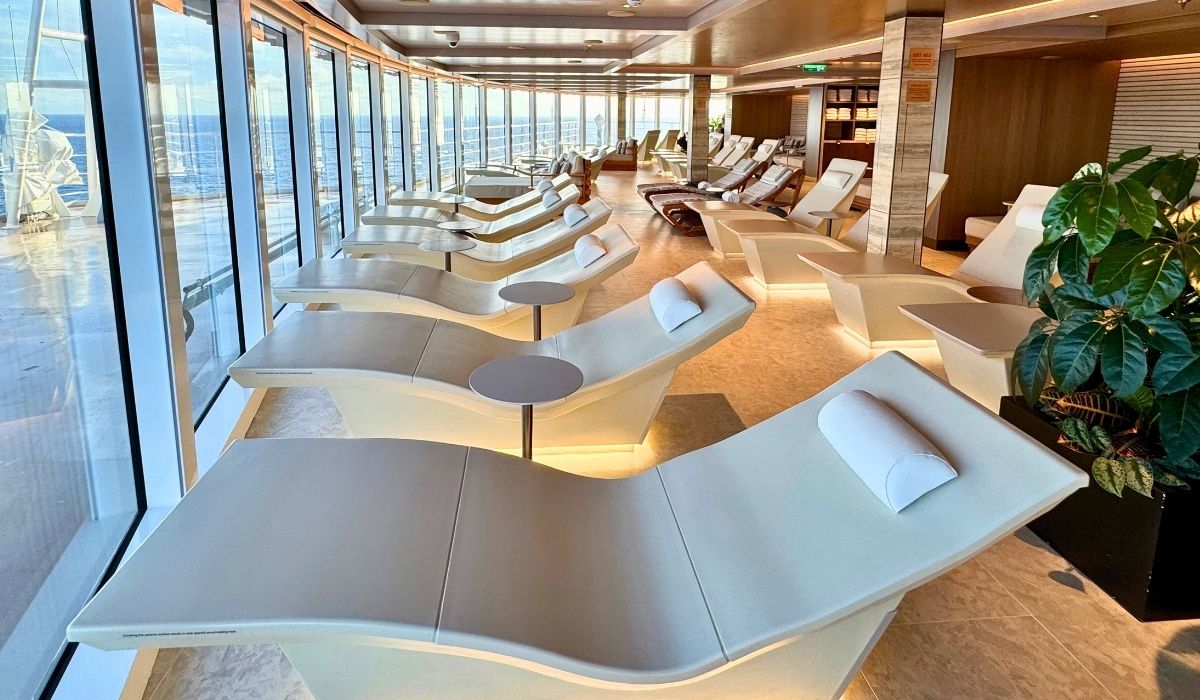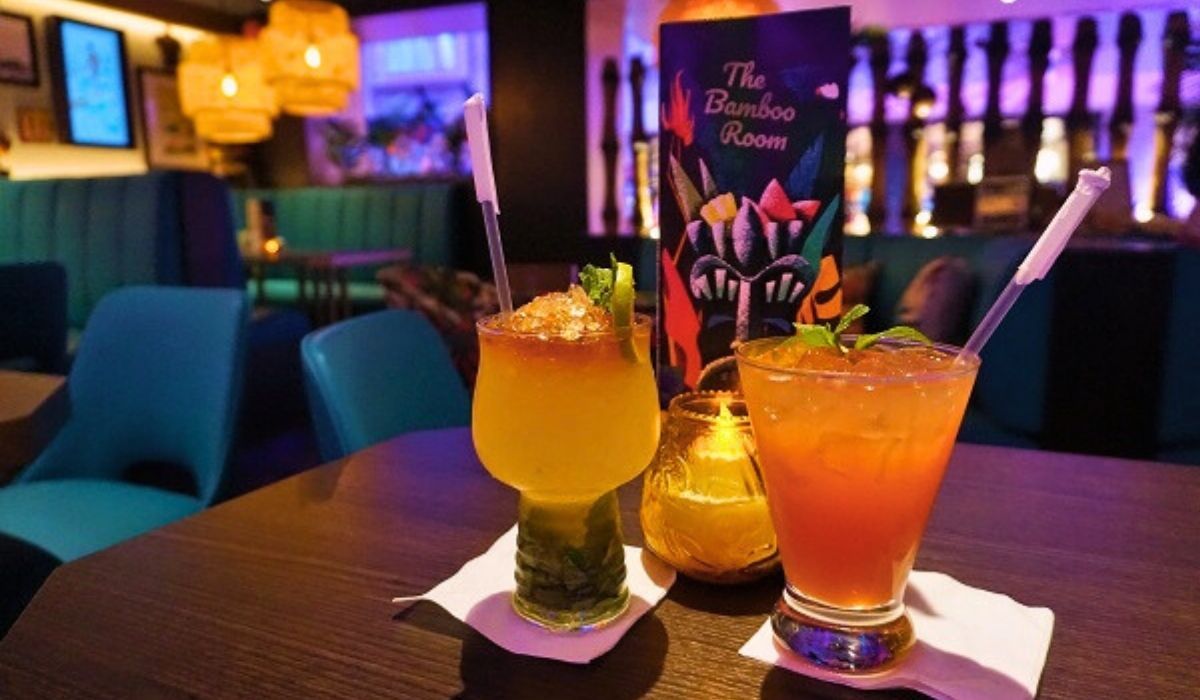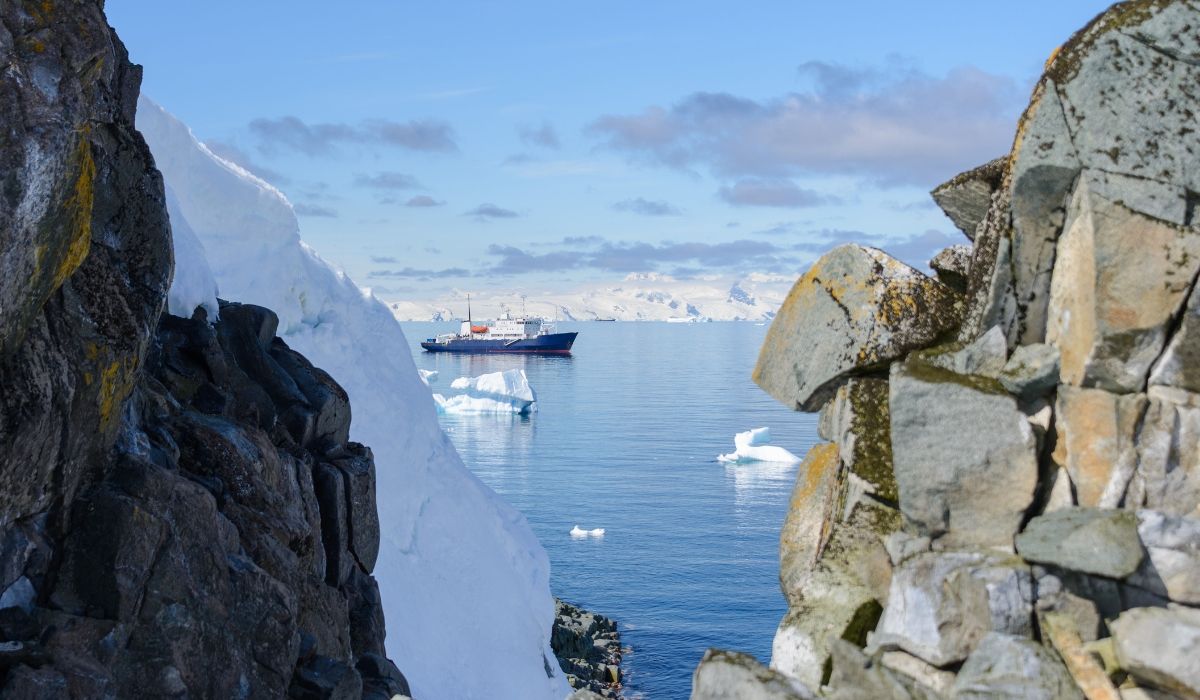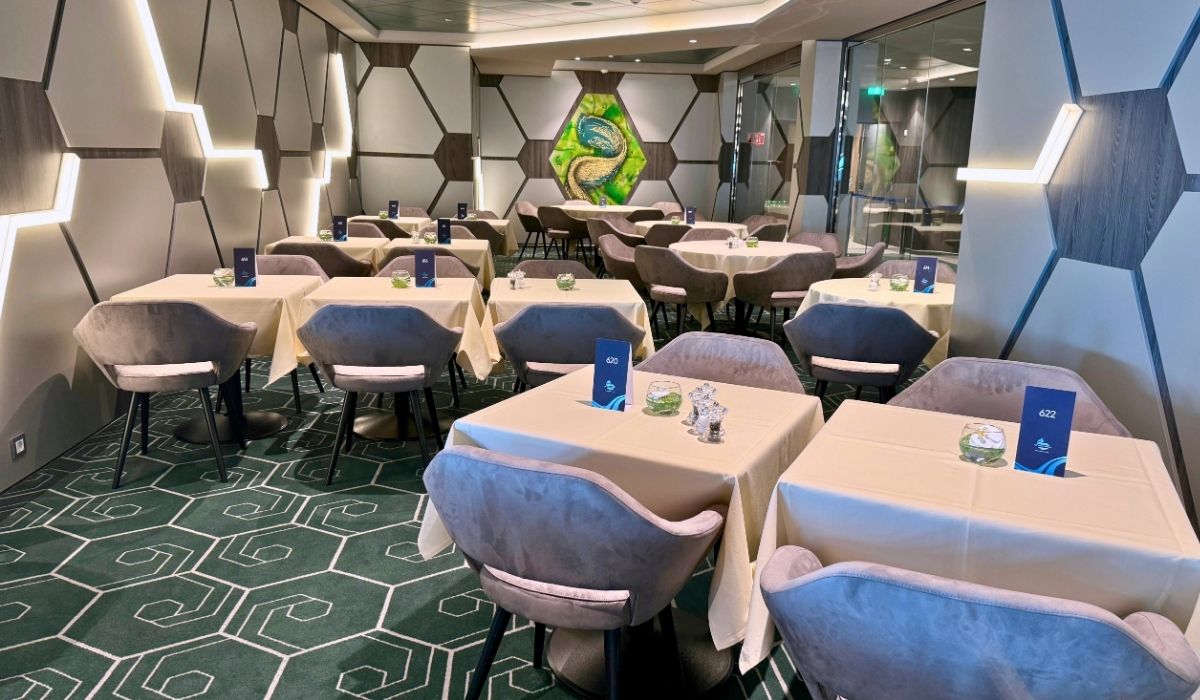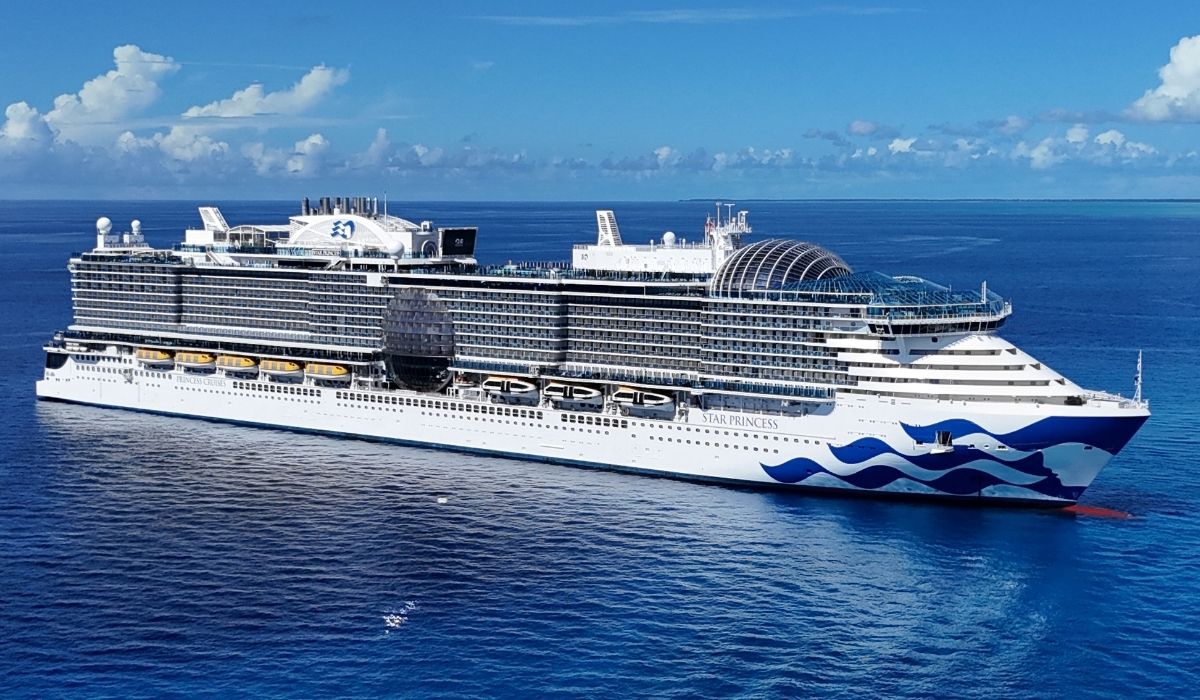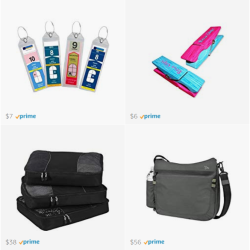The growth of the expedition cruising industry is reflected by the number of new ships being built to serve passengers anxious to explore a different side of cruising. During the COVID travel pause, some people banked their money that they saved by not traveling for several years. Those savings went toward bucket list cruising adventures like expedition cruising. Regular expedition cruisers did the same, but perhaps looked at exploring a new destination or sailing with a different expedition cruise company.
Closer examination of expedition cruises reveals a multitude of options in cruising styles and philosophies. This guide to expedition cruising will narrow down the options to help you choose an expedition cruising style that suits your needs.
Call to Book Your Next Cruise Now: 1-855-228-5584!
Complete Guide to Expedition Cruising
What is Expedition Cruising?
Defining an expedition cruise is no easy task. For some people, a cruise to a destination like Alaska, might be considered an expedition cruise for them. And there are absolutely some components of an Alaska cruise that are characteristic of a true expedition cruise. Aligning with nature. Seeking smaller ports. Focusing on the local culture. An Alaska cruise is an ideal gateway to the expedition cruising experience.
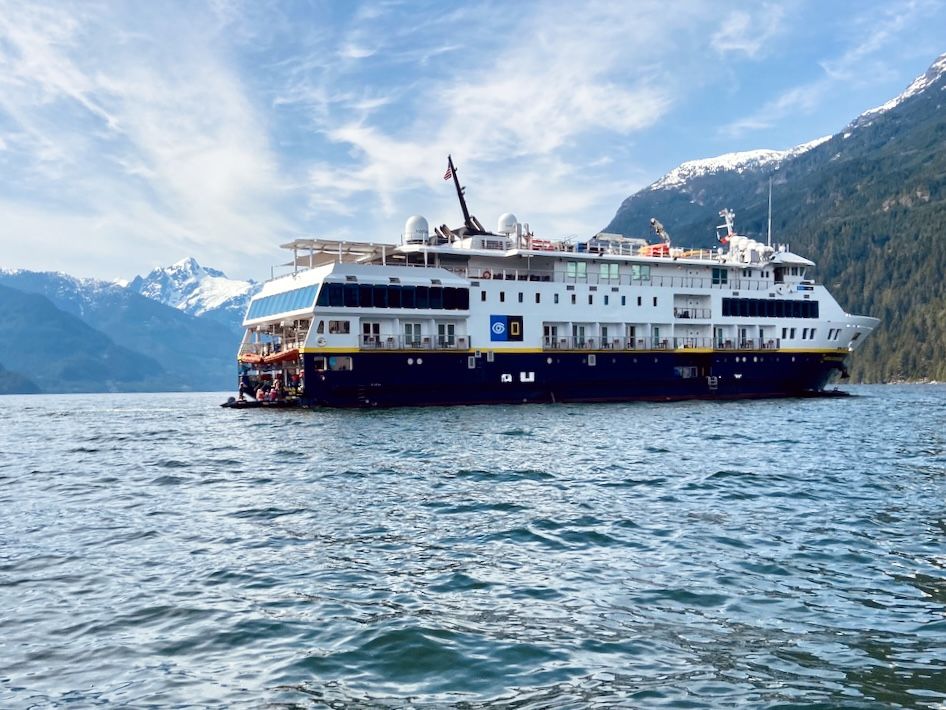
Although it’s difficult to generalize about expedition cruising, there are many common features that define most expedition cruises. First of all, the ship visits off-the-beaten path destinations.
For example, on a recent Lindblad Expeditions cruise through the Inside Passage, we explored parts of the Inside Passage that the large cruise ships could not safely navigate. Even then some of our destinations couldn’t even be reached by our small ship, NatGeo Venture. We often used zodiacs to explore the area or to get us to shores that required wet-landings.
These types of voyages span from Adventures by Disney expedition cruises to an adult-only Viking expedition cruise.
Size of an Expedition Ship
Size really does matter when it comes to expedition cruising. Smaller ships carry fewer passengers, thus limiting the effect of a mass of crowds descending upon a destination. In fact, many ports of call on expedition ship itineraries are inhabited by just a few people.
For example, on my Hurtigruten cruise to Greenland, we stopped at towns so small that there appeared to be no source for food or basic necessities. The locals, if even encountered in these tiniest of towns, shared their stories with us passengers. On one stop, one man claimed to have been looking for a wife forever. He nearly proposed to one of the younger members of our group. Such encounters make for lasting memories.
Ships must carry fewer than 500 passengers to visit the Antarctica region. Just a few people may land on a spot in Antarctica at a time. That could mean waiting to go ashore.
Physical Fitness Levels
Expedition cruising doesn’t necessarily mean intensive physical activity or require being an ultra athlete to participate. Many cruise lines define their excursions according to level of difficulty. This allows passengers the option of choosing which level of physical exertion they are comfortable with.
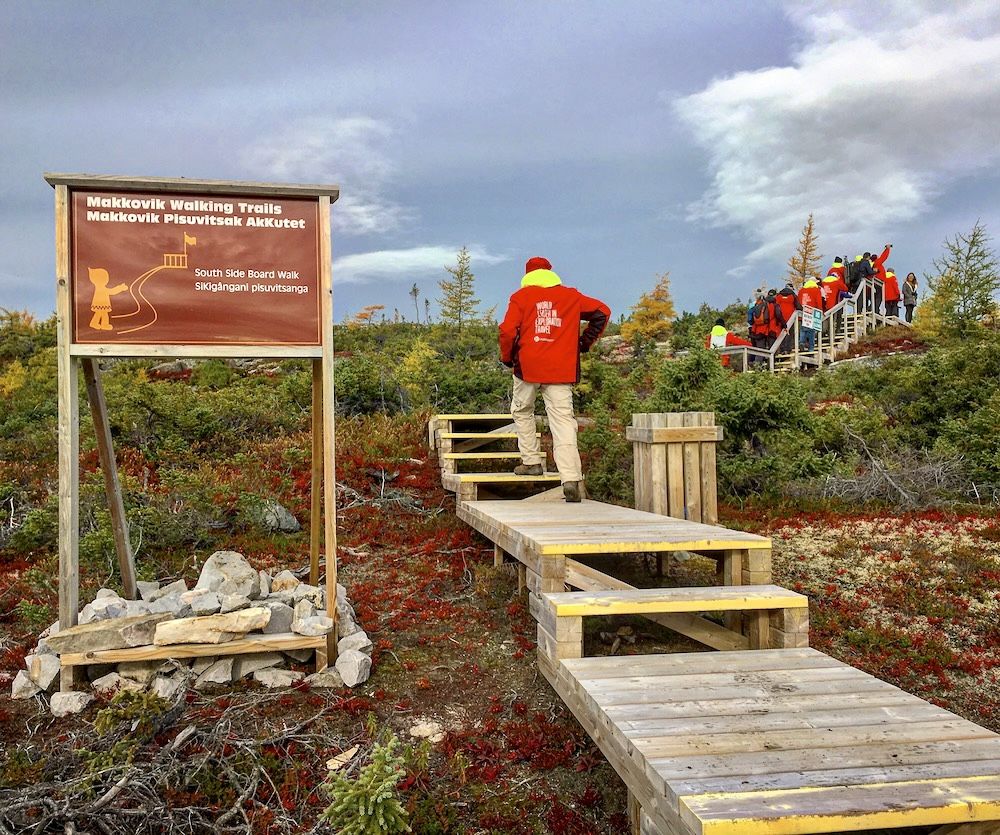
Participation in most events is not mandatory. An expedition could be birdwatching, hiking, kayaking, or searching for bears and whales.
Due to the remoteness of places visited and lack of medical services, some expedition cruise companies require evacuation insurance for their passengers.
The Destinations
Most expedition cruises reach exotic destinations, but that is just one of the characteristics of expedition cruising. Besides an Alaska expedition cruise, many expedition cruises visit the Arctic and Antarctic regions. The spectacular beauty, the nature, and the ability to witness wildlife keeps passengers returning. If you are looking for tips for your first Arctic expedition cruise, we have you covered.
However, expedition cruising doesn’t require extreme conditions. While an expedition cruise to the Galápagos probably comes to find first, the Amazon, Australia’s Kimberly, Baja California, and Mekong are just a few other warmer weather destinations.
In fact, Atlas Ocean Voyages, which does visit the polar regions, is putting a twist on the definition of expedition. In addition to their regular cruises, they will offer culinary and cultural expedition cruising in 2024. That brings in another component of expedition cruising: immersion.
Immersion
Expedition cruising focuses on in-depth exploration of a particular topic or particular region. You may have heard of Celebrity Cruises’ newest ships like Celebrity Apex or Celebrity Beyond, but did you know that they have three expedition ships that sail The Galápagos?
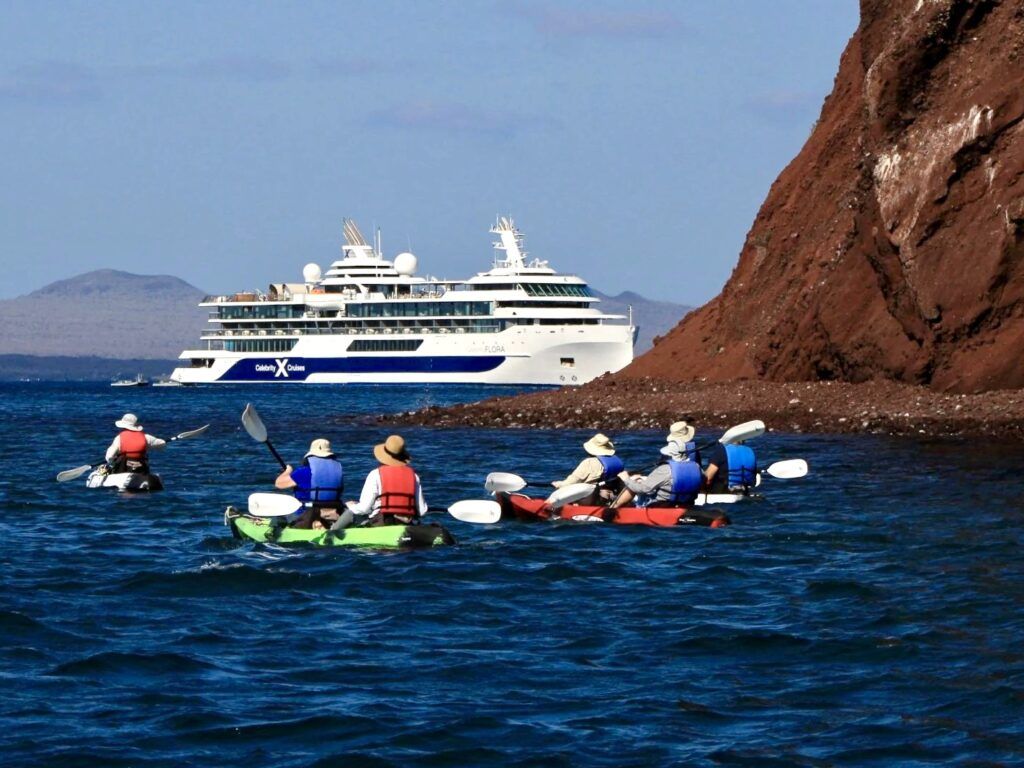
Part of the expedition cruising experience involves a staff of experts in their fields. Naturalists, scientists, ornithologists, historians, and photographers are just a few of the different types of experts found on an expedition cruise.
Guests will explore the seas with these experts who lecture throughout the day, set up labs or share their research with guests. On Viking, citizen scientists participate in activities, such as identifying microplastics in the onboard labs. Viking cooperates with NOAA and launches weather balloons, a highlight of a Viking expedition cruise.
Professional photographers document the voyages and many cruise lines provide guests with a photographic or videographic memory of their cruise at the end of the sailing. During the sailing, photographers are on hand to share their expertise with guests. Lindblad even offers cameras and lenses for guests to try out.
EXCLUSIVE SAVINGS: Get Deals on Your Next Cruise!
Accommodations and Dining
Expedition cruising doesn’t necessarily mean bare bones accommodations. It is possible to sail on a ship with more basic accommodations and dining options. UnCruise and others source local foods, giving their guests a true flavor of the area. Many expedition ships have few public areas, so guests are relegated to the only public area on the ship, which is often the lecture lounge. A small ship makes efficient use of its space, so there is no additional space for extra lounges or alternative dining rooms.
While good food is important, an expedition ship usually has fewer menu items and few, if any, alternative dining restaurants. At the other end of the spectrum, there are ultra-luxury cruise lines like Scenic, Seabourn, Silversea, and Atlas Ocean Voyages. Who doesn’t want to return to luxurious surroundings and upscale culinary experiences?
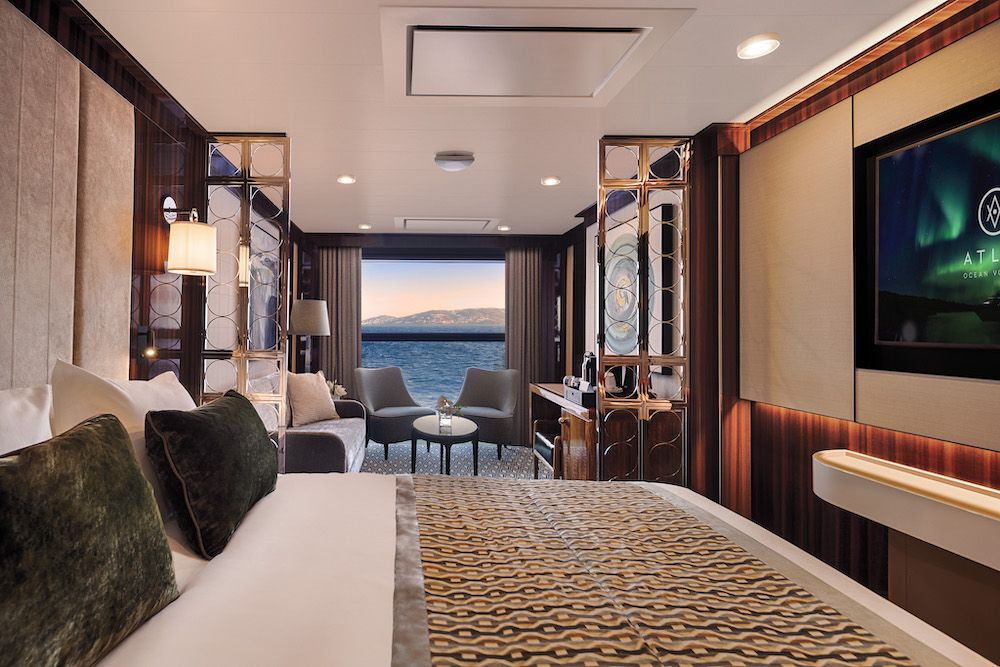
Scenic Cruises continually reconsiders what expedition cruising means to their guests and adjusts accordingly. They combined ultra-luxury with expedition in 2019. After kayaking, hiking, or other high energy exploration, who doesn’t want to return to a ship that offers creature comforts?
Expedition cruising includes intangibles. Hurtigruten Expeditions started way back in 1896. Along with their expeditions around the world, they have also addressed environmental concerns and sustainability, another common feature of expedition cruising.
They consider themselves the most sustainable adventure travel company in the world, pioneering the banning of single-use plastics and heavy fuel oil. They launched the first battery hybrid-powered cruise ship, MS Roald Amundsen. Its MS Fridtjof Nansen ranks as the safest and most sustainable cruise ship in the world.
Typical Guest an on Expedition Cruise
Expedition cruising guests primarily look for adventure and immersion into less-explored geographic regions. They are usually highly educated, have disposable income, and are mature. Attending lectures or becoming a citizen scientist comes naturally to them.
Expedition cruising guests often are very brand loyal. The majority have cruised many times. It’s unlikely that they are first-time cruisers. Though, Poseidon Expeditions notes a trend over the past few years of seeing more younger and solo guests.
How to Choose the Best Expedition Cruise for You – 10 Questions to Consider.
Just like ocean-going ships have distinct styles of sailing, so do expedition ships.
Be sure to do your research in advance. Celebrity Cruises, Seabourn, Silversea, and Viking offer expedition products. If you enjoy their ocean cruising experience, you may want to give their expedition cruises a try.
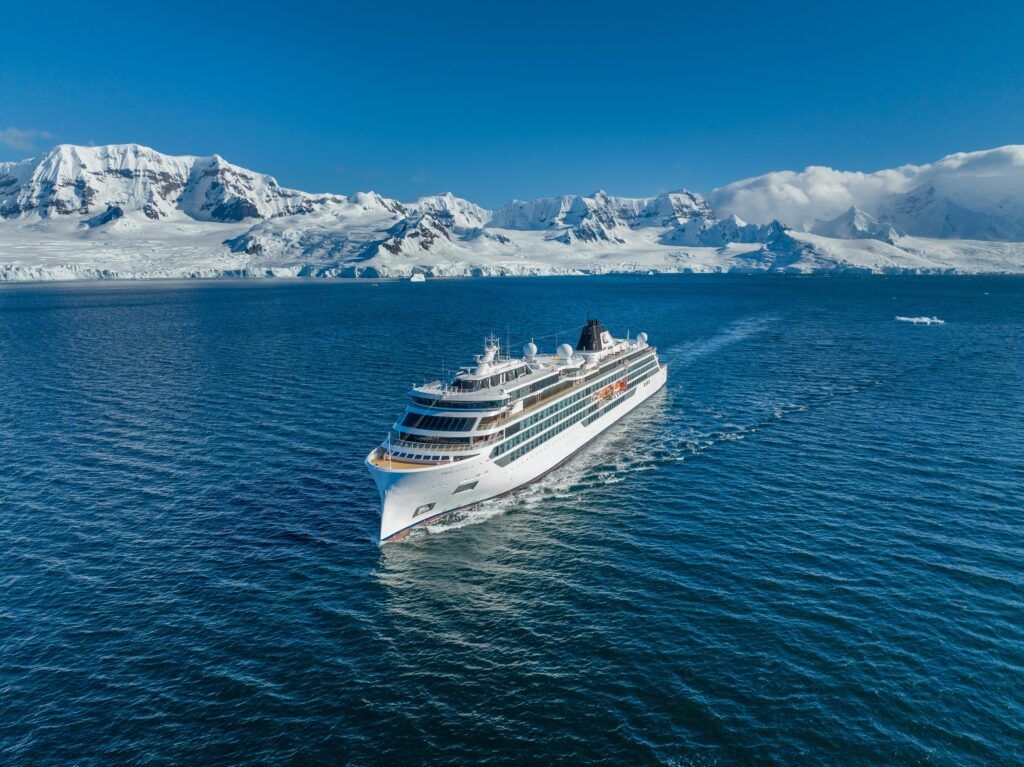
Are you more focused on a destination or on an educational experience?
If you are considering The Galápagos or The Amazon, you can rule out several companies just for the fact that they don’t sail there.
If you are focused on learning about the flora and fauna of a particular destination, you may want to read the bios of the naturalists and other experts sailing on a particular itinerary.
Are you looking for lots of space to spread out or get away from other passengers?
Check the size of the ship. On one hand, a small ship can take you to exciting and remote places. On the other hand, smaller ships don’t have lots of places to get away to avoid the rest of your group. Remember that you will engage in activities with the same group of people on a daily basis.
Check to see if there is a larger group sailing. They sometimes become clique-ish. Tour operators like Road Scholar use expedition ships for their programs. They have their own activities planned including shore excursions exclusively for them.
Smaller ships unload more quickly and get guests to shore more efficiently. In landing spots where only so many guests from a ship are allowed on land at a time, this is definitely something worth consideration. Aqua Expeditions has ships ranging in capacity from 16 to 40 guests.
Are you able to spend days away from commercial ports of call?
Keep in mind that one highlight of expedition cruising involves discovering off-the-beaten path destinations. That means that expedition ships are unlikely to stop at more commercial ports. Some ships may stop at smaller communities and the occasional larger town.
For example, on my recent Lindblad Expeditions cruise, we stopped in Victoria, BC, on our way up through the Inside Passage to Alaska. Over the two weeks of cruising, we stopped in only two other small ports. If shopping is of prime importance to you, you might re-consider whether expedition cruising is a good choice.
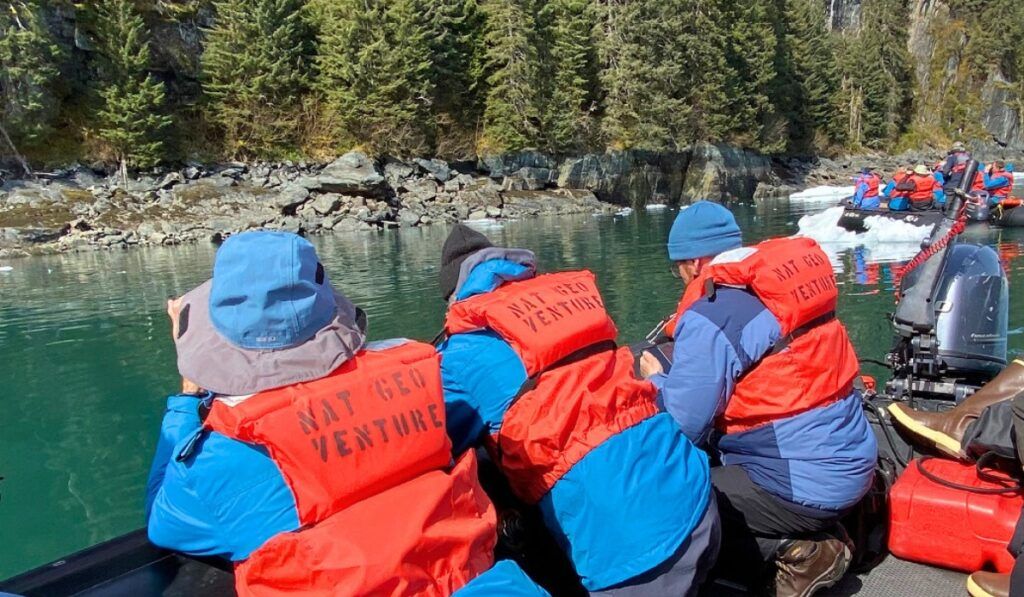
Do you need mobility equipment for maneuvering?
Many expedition ships are unable to accommodate guests with mobility issues. While some do have semi-accessible or accessible cabins, most of the expedition experience involves physical activity. However, if you are satisfied with hearing the lectures and enjoying the scenery, you may be content to stay on the ship.
Boarding a ship might be challenging. Speak with a travel advisor familiar with the cruise line that you will be sailing or speak directly with the cruise line. Getting into zodiacs isn’t always the easiest process. On my cruise on Iceland ProCruises, the steep metal stairway to access the zodiacs took some extra care. Other ships have similar systems for boarding zodiacs.
Few expedition ships are equipped with elevators; however, some like Adventure Canada require only that you can negotiate stairs on your own. Others like Aqua Expeditions are small and do not have enough space to accommodate disabilities.
Some of the expedition cruise lines require anybody with physical disabilities to travel with a companion who can assist.
I was impressed by a group of women with walkers exploring one of the ports where the ship docked. I admired their spirits. The polar regions simply can’t accommodate those needing special assistance. This is a long winded way of saying that you need to know your limitations and objectives for choosing a particular destination or ship for your expedition cruise.
Are you traveling with your family?
Adventures by Disney might be top of mind for family expedition cruising. They cater to families. Companies like Lindblad allow children of any age, while others have minimum age requirements.
Some of the expedition cruise lines allow one age for sailing, but a higher age for going on expeditions.
Several of the expedition cruise lines have special activities for children and even special sailings catering to families. Many ships have a limited number of rooms that can accommodate more that two people. Connecting rooms are often limited as well.
Further, there are no kids clubs. Programming for children on most expedition cruise lines is only on specific ships or specific dates.
Are you traveling solo?
More and more people are traveling solo on expedition cruises. Some of the cruises offer a matching service to find you another solo travel to share a room with. That definitely helps the budget. If there is no matching service, ask your travel advisor about sailings that offer reduced rates for solo travelers.

Do you need to be entertained?
If you enjoy big production shows like magicians or other Broadway-caliber entertainment while cruising, an expedition ship probably isn’t for you. The entertainment on an expedition cruise is usually the surrounding nature, the lecturers, and occasionally your fellow passengers.
On some ships, local performers or other small acts provide more traditional entertainment. Some ships do not even have televisions in the staterooms.
Are you flexible?
Expedition cruising often follows a general schedule. With a focus on viewing charismatic mega fauna, the captain of the ship might stop or sail in a certain area for an extended length of time hoping to see a breeching whale, bears, or other wildlife. The same can happen on a zodiac tour.
While in Endicott Arm, hoping to get to Dawes Glacier at the end of the arm, NatGeo Venture in the name of safety, stopped when the ice became too treacherous. We hopped in the zodiacs and sure enough, spotted a whale close to shore. Just near to that spot, we stopped to watch a mother bear and her cubs enjoying the shoreline and entertaining us.
Our original plan had been to explore another area, but with all the activity happening right near us, we spent time there and abandoned the plan to explore another inlet.
Tides, weather, and other restrictions can affect the sailing schedule. So, going with the flow is important. If you need a rigid schedule, expedition cruising may not be your best choice.
Weather, sea conditions, or local laws may restrict the usage of the on-board toys as well.
Are you able to get comfortable with the weather?
If you absolutely hate the cold, the polar regions may not be your best choice for an expedition cruise. Even in the respective summer season, the weather may be unpredictable. Packing the proper gear greatly enhances the experience. Expedition cruise lines provide you with a list of items, including mandatory items like high-boots for wet landings.
Warmer areas like the Amazon or Baja California also might present a problem for those adverse to the heat. Choose your cruise dates wisely and follow the recommendations of the expedition cruise line. They have been doing this for a long time and know what works.
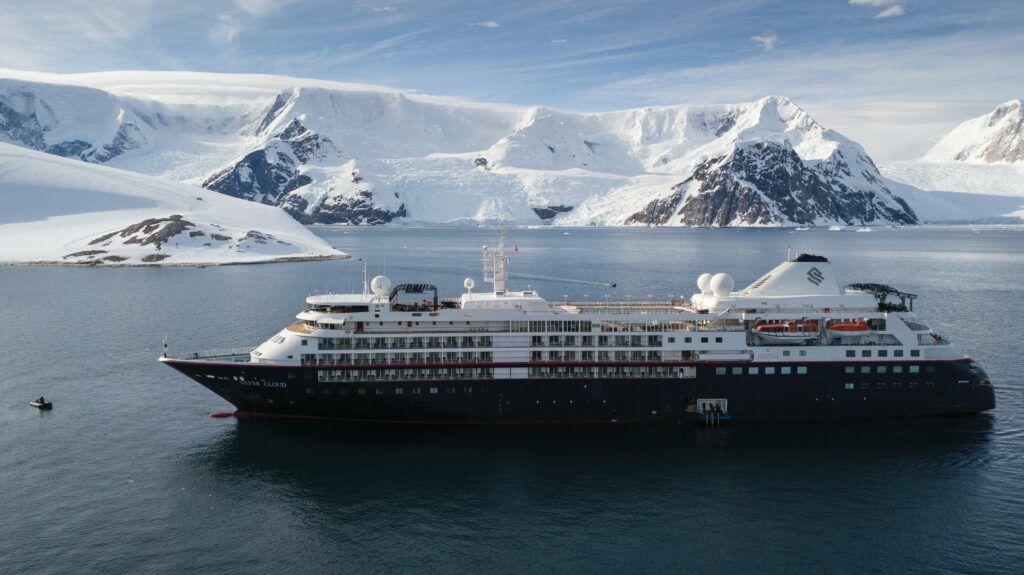
Is expedition cruising in your budget?
As you search for the perfect expedition cruise, you should expect a cruise of a comparable length of time to cost more than a cruise on a mainstream line. After all, there are fewer passengers and that means less revenue for the cruise line to pay crew and expert staff. Permits for visiting certain regions and other requirements add to the cost of the cruise.
Some expedition cruise lines offer an all-inclusive experience. When comparing and trying to decide among the many options, be sure to take added expenses into account. Will you have to pay for shore excursions, beverages, or equipment rentals?
In the end, your final selection of an expedition cruise comes down to your personal preferences, recommendations or reviews from others who have sailed, and cost.
BOOK NOW: Get Exclusive Deals on Your Next Cruise!
Best Expedition Cruise Lines
Here is a quick list of some popular expedition cruise lines, with a couple features for each one that might help with making your selection.
- Adventure Canada– Family-owned, multi-gen groups with kids under 4 paying only charter air.
- Adventures by Disney– Family focus. Some 3 and 4 night cruises offered.
- Aqua Expeditions– 90% local guides for authentic experience. River expeditions.
- Atlas Ocean Voyages– Private jet air on polar expeditions. All-inclusive.
- Celebrity Cruises– Solely explores The Galapagos. Glamping on Flora.
- Hurtigruten– All expedition ships except SantaCruz II are accessible for wheelchairs. High percentage of expedition team are permanent employees.
- Iceland ProCruises– Specialize in Iceland and Greenland. Most Iceland ports are developed.
- Lindblad Expeditions– Glass igloos on Resolution and Endurance for sleeping under the stars. Global Explorers program for kids on some ships.
- Poseidon Expeditions– Best Polar Expedition Operator 2023. 14 max pax.
- Scenic– Technology for quicker passages, more time on shore. Helicopter on board.
- Seabourn– UltraLuxury. Submarines onboard.
- Silversea– UltraLuxury. Polar bear sighting promise on certain cruises.
- UnCruise– All-inclusive. Family cruises with special kids programs in 2024.
- Viking– An adult-only scientific enrichment environment with weather balloon launch. Extensive library.
Comments
Did you find this complete guide to expedition cruising helpful? Have you taken an expedition cruise to one of these bucket list destinations? Drop us an anchor below to share your expedition cruise experiences.


